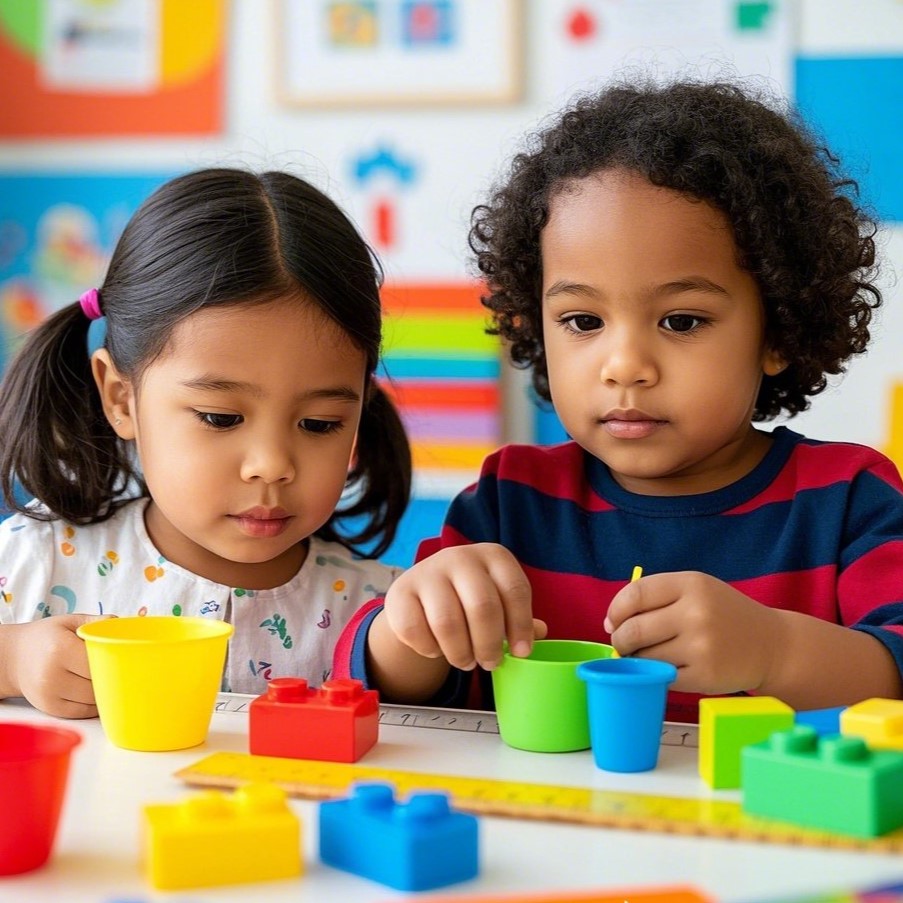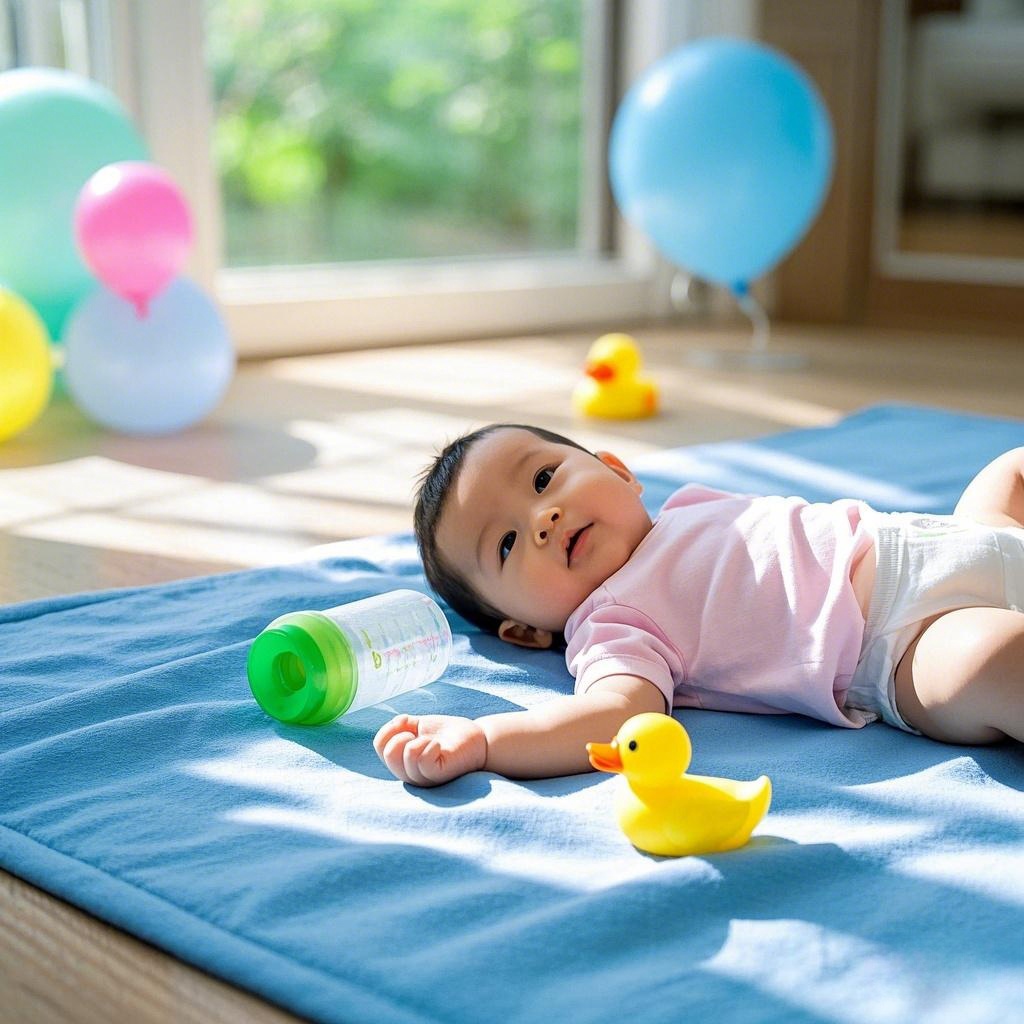In a world where technology and innovation are constantly evolving, it’s never too early to start introducing children to the concepts of STEM—Science, Technology, Engineering, and Math. For preschoolers, STEM isn’t about complicated theories or abstract formulas. It’s about play, exploration, discovery, and asking questions about how the world works.
The great news? STEM activities for preschoolers can be simple, fun, and done right at home or in the classroom using everyday materials. These early childhood STEM experiences lay the foundation for critical thinking, problem-solving, and creativity, all while encouraging hands-on learning that keeps little minds engaged and excited.
Here are 10 fun and easy STEM activities that are perfect for curious preschoolers.
SCIENCE ACTIVITIES FOR PRESCHOOLERS
1. Rainbow Walking Water
Objective: Teach color mixing and absorption.
Materials:
- 6 clear cups or jars
- Paper towels
- Red, yellow, and blue food coloring
- Water
Instructions:
Line up the six cups, filling every other one with water. Add food coloring to the filled cups—red in the first, yellow in the third, and blue in the fifth. Connect each cup with a folded paper towel strip so it dips into both a water-filled and an empty cup. Over time, the colored water “walks” up the paper towel and into the empty cups, mixing to form new colors.
STEM Connection:
This is a fun science experiment for kids that demonstrates capillary action, color mixing, and introduces basic chemistry concepts through visual play.

2. Sink or Float
Objective: Develop observation and prediction skills.
Materials:
- A container filled with water
- A mix of household items (e.g., spoon, sponge, plastic toy, rock)
Instructions:
Let your preschooler guess whether each object will sink or float before placing it in the water. Then, test each item and compare the results to their predictions.
STEM Connection:
This activity encourages early scientific thinking, hypothesis-making, and experimentation—perfect for preschool STEM play.
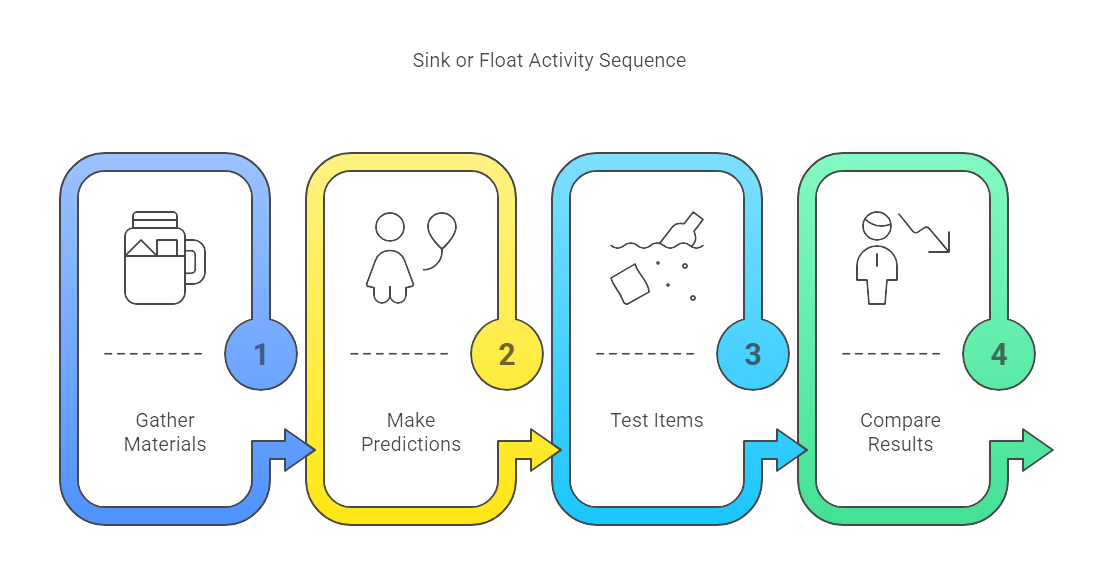
3. Fizzy Volcano Eruption
Objective: Explore basic chemical reactions.
Materials:
- Baking soda
- Vinegar
- Food coloring
- Small container or plastic volcano model
Instructions:
Add baking soda and a few drops of food coloring to the container. Pour vinegar on top and watch the bubbly “eruption” happen.
STEM Connection:
This fun experiment introduces the concept of acid-base reactions and makes science exciting for preschoolers.
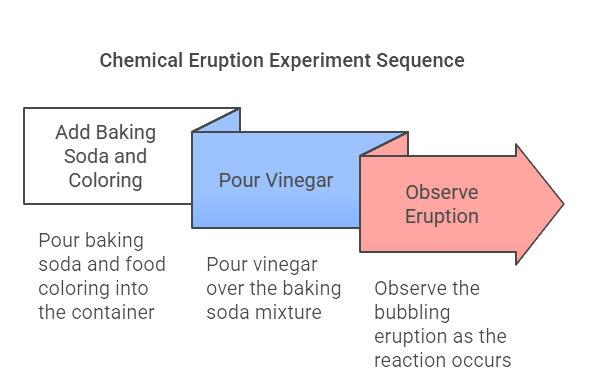
TECHNOLOGY ACTIVITIES FOR PRESCHOOLERS
4. Coding with Colored Arrows
Objective: Teach sequencing and logical thinking.
Materials:
- Colored paper arrows
- Tape
- Small toy or stuffed animal
Instructions:
Create a simple floor grid using tape. Place a toy at one end and a destination at the other. Have your preschooler place colored arrows in a sequence to guide the toy from start to finish.
STEM Connection:
This screen-free technology activity helps children develop early coding concepts such as direction, order, and logic, making it a perfect introduction to tech without needing a device.

5. Simple Circuits (with supervision)
Objective: Understand the basics of electricity.
Materials:
- Coin cell batteries
- LED lights
- Aluminum foil
- Tape
Instructions:
Demonstrate how to create a simple circuit by connecting an LED to a battery using aluminum foil and tape. Watch as the light turns on!
STEM Connection:
This hands-on learning activity gives preschoolers a safe and fun way to explore how electricity works—ideal for early childhood STEM learning.
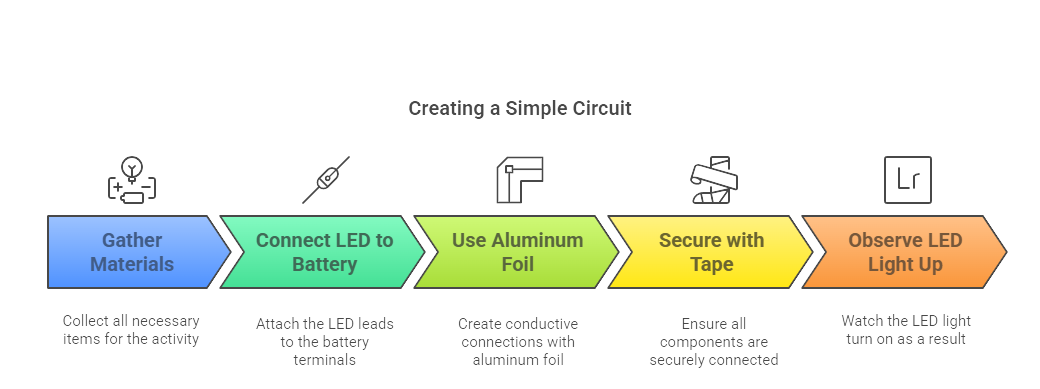
ENGINEERING ACTIVITIES FOR PRESCHOOLERS
6. Marshmallow and Toothpick Structures
Objective: Build and understand structures.
Materials:
- Mini marshmallows or play dough
- Toothpicks
Instructions:
Show your child how to connect marshmallows with toothpicks to build different structures like cubes, triangles, and towers.
STEM Connection:
This preschool engineering project enhances spatial awareness and introduces basic principles of design, geometry, and construction.
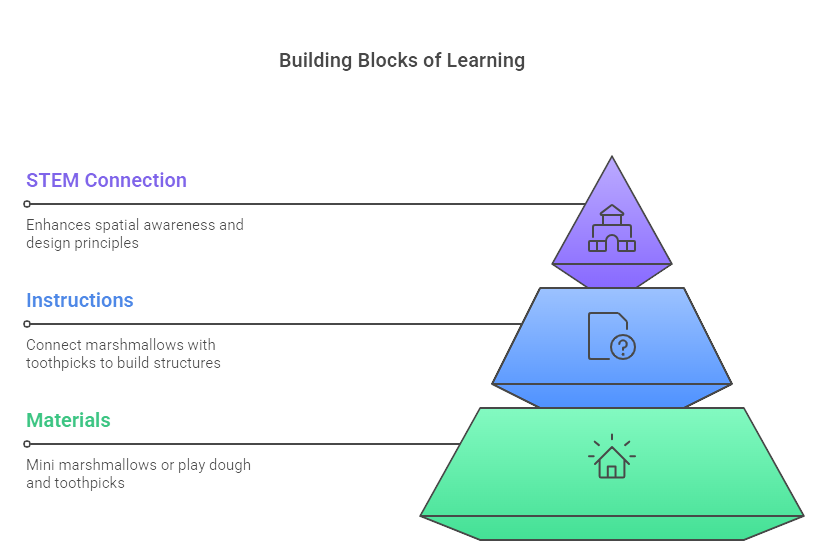
7. Recycled Ramp Challenge
Objective: Experiment with motion and gravity.
Materials:
- Cardboard boxes or tubes
- Tape
- Toy cars or balls
Instructions:
Create ramps using recycled materials. Test how fast or far toy cars roll down different ramps. Change angles and surfaces to explore how they affect speed and distance.
STEM Connection:
This engineering activity encourages problem-solving and introduces concepts like gravity, friction, and cause and effect.
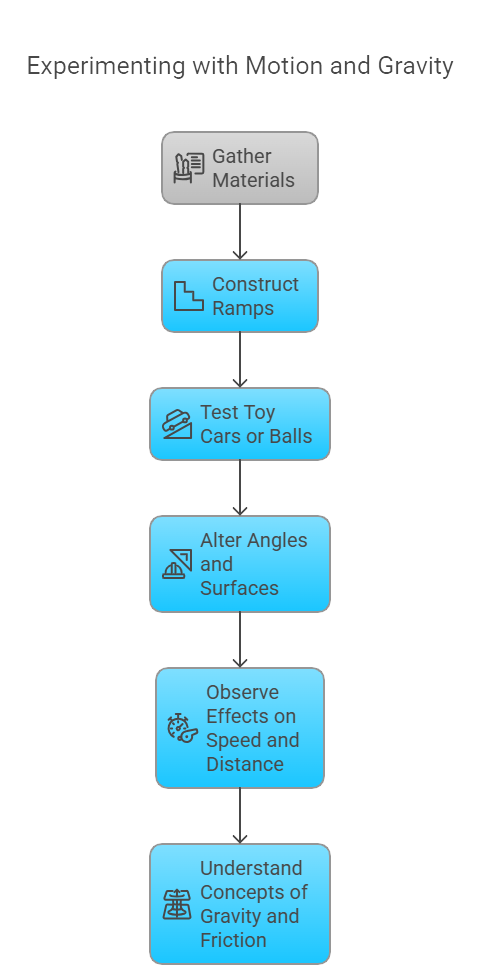
8. Cup Tower Challenge
Objective: Develop planning and structural thinking.
Materials:
- Plastic or paper cups
Instructions:
Challenge your child to build the tallest tower using only cups. Try different configurations and count how many levels they can build before it collapses.
STEM Connection:
This activity combines engineering with math skills and helps develop hand-eye coordination and balance.
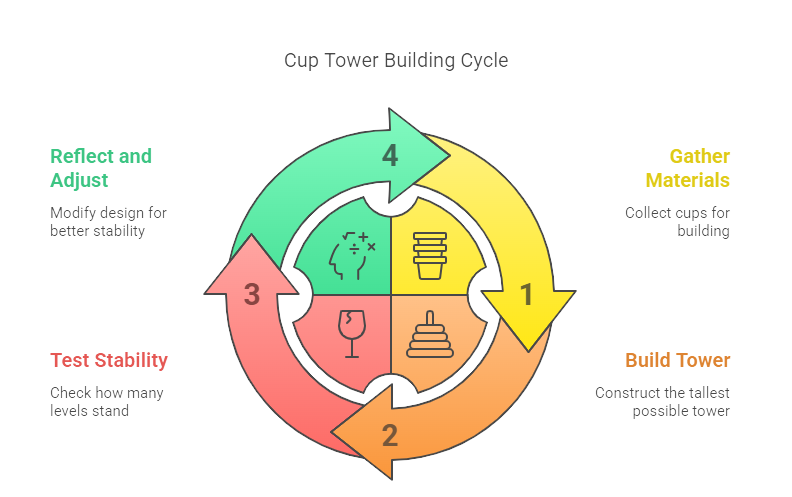
MATH ACTIVITIES FOR PRESCHOOLERS
9. Nature Counting Hunt
Objective: Practice counting and sorting.
Materials:
- A small bag or basket
- Checklist of items (e.g., 4 rocks, 3 leaves, 2 sticks)
Instructions:
Go for a nature walk and encourage your preschooler to find specific quantities of natural items. When you return, count and sort them together.
STEM Connection:
This fun math activity combines counting, classifying, and nature exploration, making math hands-on and meaningful.

10. Pattern Play with Beads or Blocks
Objective: Identify and create patterns.
Materials:
- Colored beads, buttons, or blocks
- String (optional)
Instructions:
Start a simple pattern (e.g., red-blue-red-blue) and ask your preschooler to continue it. Gradually increase complexity with more colors or shapes.
STEM Connection:
Patterns are a foundational math skill. This activity helps children recognize sequences, develop logic, and prepare for future math learning.
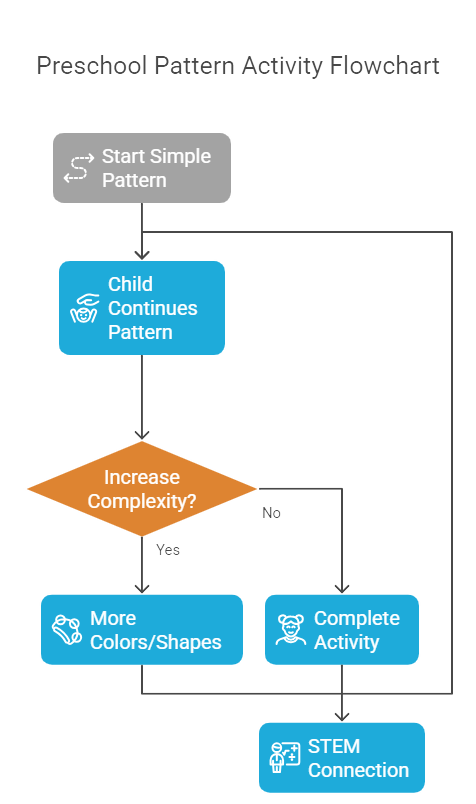
Why Early STEM Matters
These easy and engaging STEM activities for preschoolers do more than just keep children busy. They help build essential life skills such as communication, collaboration, creativity, and critical thinking. When children explore how water moves, why things float, or how to build a tall tower, they’re learning to think like scientists and engineers.
STEM for preschoolers is not about pushing academics—it’s about nurturing a mindset of curiosity and problem-solving. With just a few simple materials and a bit of imagination, you can turn everyday play into meaningful learning experiences.
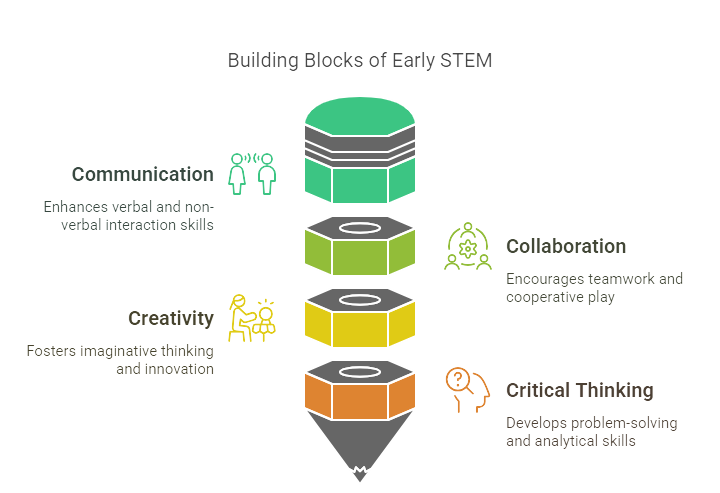
Final Thoughts: Keep It Playful
Remember, the best STEM experiences for young children are open-ended, exploratory, and most importantly—fun. Encourage questions, celebrate mistakes, and join in the play. With these 10 easy STEM activities, you’re not only helping your preschooler learn—you’re setting the stage for a lifelong love of discovery.
So gather those materials, put on your explorer hats, and get ready for some STEM-powered adventures!

